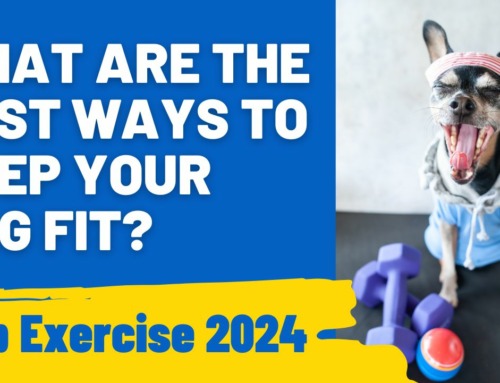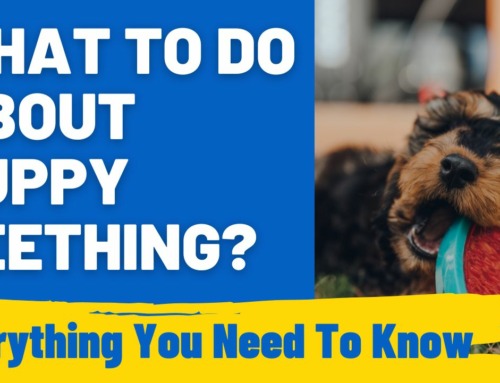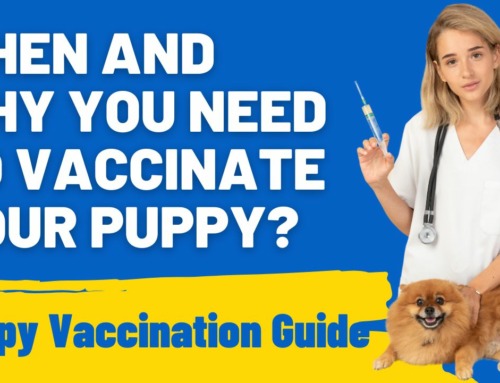As a female dog owner, one of the first care components you’ll have to consider is periods. As your pup grows, you can expect to see signs of heat to show.
Now, when will those signs appear exactly? Well, your puppy can get their first period once they turn around six months old. Nevertheless, the age is not standard among all breeds.
Stick around to learn more about a puppy’s first period, including when it’ll come, signs, and how to handle it.
How Do I Know If My Puppy Is Starting Her Period?
From behavioral to physical signs, there are several ways you can know if your puppy is starting her period.
Behavioral Signs of Heat
During a puppy’s heat cycles, she’ll likely exhibit the following behavioral characteristics.
Skittishness
Your puppy might feel more skittish and agitated than usual. This attitude primarily comes during the initial estrus phase.
The dog will especially showcase aggression toward you, other people, and female dogs. She’ll likely be more open to male-dog interaction.
Excessive Urination
Dogs during heat tend to urinate more frequently. It signals to surrounding male dogs that they’re responsive to mating.
Frequent Licking of the Genital Area
Another clear sign of your puppy starting her heat is frequent genital licking. They do this to sanitize the bloody discharge. It also serves to them as a form of self-comfort.
Tail Position Change
During the start of a puppy’s period, its tail is tucked in. As the heat cycle develops and bloody discharge increases, they’ll curl or position it to the side. The action is known as flagging since it signals male dogs that they’re ready to mate.
Physical Signs of Heat
A puppy starting her period will show several physical signs, depending on each phase of the reproductive cycle.
Bleeding Discharge
At the start of the puppy’s cycle, you’ll notice red-colored discharge emitted from the vulva region. You can trace the discharge from spotting on the bedding, carpet, or couch.
As the heat cycle progresses, a puppy’s bloody discharge will decrease in quantity. It’ll turn to a more yellow and brown-hued shade.
Expanded Vulva
A puppy’s vulva is located below the anus and is the opening to their vagina. During the reproductive cycle, the dog’s vulva will swell and hold a reddish tint. While it may look worrying at first, it’s nothing to worry about when your dog is in heat.
How Long Does A Puppy’s First Period Last?

A puppy’s first period can last anywhere between 16 and 18 days. Nonetheless, each dog’s cycle can be determined by factors like their breed size. For instance, a Chihuahua will typically go into heat more often than other giant breeds.
In addition, your puppy’s first period may become irregular. It won’t provide a solid reference to how long their next period will last.
How Early Do Female Puppies Bleed?
Female puppies usually bleed once they turn six months of age. Some dogs may start their period at four months. The latest a puppy can start their period is around two years, which is common among larger breeds.
After two to four weeks of being in heat, the dog’s next cycle can start approximately after six months. Now, that’s not a standard period time frame for all dogs. Some breeds, like the Great Dane, get their period once per year.
In most cases, your dog’s period intervals will stretch out more as they get older.
What To Do When Your Puppy Gets Her First Period?
When that time of the month rolls around for your puppy, you’ll want to make sure they’re feeling comfortable and well-rested. That can involve anything from giving comforting massages or snuggles to maintaining a sanitary environment.
Prepare The Necessary Supplies
The first item on your list should be doggie diapers or pads. You’ll also want to invest in pee pads to avoid a trail of discharge on your carpet, floor, or crate. Additionally, purchase a pack of unscented baby wipes to clean your pup.
Be On Top Of Cleanup

After preparing your supplies, the next step involves keeping your home and pet well-sanitized. Subsequently, we suggest creating an alarm to alert you when to change your puppy’s diaper.
Staying on top of changing diapers is essential to avoiding health complications like uterine infection. Now, a puppy will develop the instinct to clean herself, so you’ll want to designate a short period when she’s not wearing a diaper.
Inspect the genital area and ensure that it’s free of crusted areas from dried discharge. You can use the wipes to clean those bits off.
Offer a Comfortable Environment
In the estrus cycle, your dog will show signs of agitation. For this reason, you’ll want to allow her to approach you rather than the other way around. Make sure she has enough space, especially if you have children around the house.
Give More Attention
Some dogs will enjoy snuggling up to you and crave more attention during their period. If they happen to leak a few drops, don’t reprimand them. Scolding will only make them more uncomfortable.
Instead, talk to them softly. Give them a few tummy rubs and a comforting ear massage. If they like to be groomed, you can brush them.
Besides that, ensure that the puppy is eating and drinking well.
Consult a Vet
If you want to go the extra mile with your puppy, you can visit a vet and ask for a calming aid. That could come in the form of a pheromone diffuser, anti-anxiety supplements, or a calming collar.

What Happens After A Dog’s First Period?
Your dog will continue to grow into adulthood after their first period. The heat cycle will repeat in six-month intervals, depending on the breed.
When it comes to the cycle’s stages, your pup will end with the diestrus and anestrus phases. The diestrus follows the estrus or “in heat” cycle of your dog. For older female dogs that have mated, their pregnancy will develop during this stage.
Meanwhile, the anestrus cycle occurs when your puppy’s body is on standby for the upcoming heat cycle. Nothing in particular happens to their reproductive system, so you won’t notice much difference in their hormonal, physical, or behavioral aspects.
Is A Dog’s First Period Painful?
When your dog is experiencing their first period, they may feel physically uncomfortable from cramps, but they shouldn’t be in pain.
If you notice clear signs of distress, we suggest consulting your vet.
Tips to Ease Your Puppy’s First-Period Cramps
Dogs in heat can go through uncomfortable cramps and will require your special care. That can involve going on extra walks to alleviate stress or giving a comforting massage.
Use a Heat Pad
One of the best ways you can offer an ideal environment for your menstruating dog is by using a heating pad. You can put it near the bed to snuggle above and keep her warm. It’ll relieve stiffness and encourage blood flow.
Test it out first to see if your pet enjoys cuddling against it. If you notice them avoiding the heating pad, then you’ll want to resort to other comforting methods.
Give Abdomen Massage
An abdominal massage during the time of the month can significantly alleviate your pet’s discomfort. They’ll appreciate the extra attention, and it’ll relax their muscles.
To do so, carefully go in circles around her stomach using your knuckles or fingertips. Focus on your puppy’s reaction. If she’s baring her teeth and growling, it might be best to give her some space instead.
Provide Chew Toys
Physical comfort aside, distracting a puppy is also an exceptional method to reduce her discomfort levels.
It’ll allow her to release all her pent-up aggression and frustration on the chew toy. Plus, the chew toy will keep your pup from excessively licking its genital area, which can cause rashes.
Are you interested in reading our post, When Will My Puppy Stop Chewing Everything?
Key Takeaways
When will your puppy have her first period? In short, the bleeding starts around the six-month mark. It can happen after and less frequently for larger breeds like the St. Bernard.
As the pup goes through her menstrual cycle, you’ll want to provide a comforting hand, whether that entails a tension-relieving abdomen massage or a short session with her favorite chew toy.




